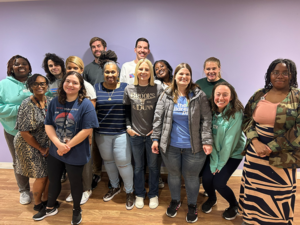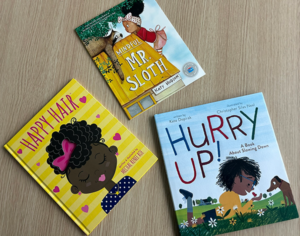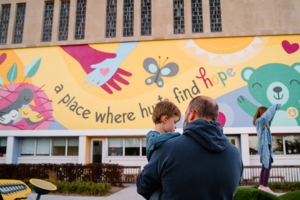Helping Young Children Process Traumatic Events
Our entire community’s sense of safety has been violated. For some of us, our physical safety was violated. For all of us, our emotional safety has been disrupted. We encourage both grownups and children to pause. Take a deep breath. It’s important for adults to take care of themselves and address their own big feelings before caring for the young children in their lives.
Much of this week has been out of our control. Below are some steps we can take that are in our control:
Retrain the Brain for Healing
- Rainbow breathe – Choose a color and look around the room to identify that color. Breathe in for four counts, hold it, then breathe out four counts.
- Move Your Body – Take a walk with your child, have a dance party or play catch with a ball. This will help both you and your child release the tension.
- Relax – Our brains have been on overdrive. Relax your brain by prioritizing sleep, limiting screens, and being flexible with schedules.
Be Your Child’s Protector
During these scary moments, young children need their protectors — parents, grandparents, teachers — any key people in young people’s lives. Focus on giving undivided attention to your child. Children need to hear the words “you’re safe now” and see you’re there for them.
Have the Necessary Conversation
It’s important for trusted adults to start the narrative instead of allowing the news or friends at school to fill in the details. One tactic to try for these tough topics is to talk while engaging in another activity, whether driving in the car or doing a jigsaw puzzle together.
Start the conversation by asking “What did you hear?” or “What do you know about the situation?” Listen more than you talk. Correct any mistakes, but don’t minimize feelings. After a scary event, we’re all seeking to understand. A young brain may have lots of questions or confusion (or they may not). End with affirming that we’re safe now.
Things to Notice
The next few weeks will likely be difficult for all as we navigate our feelings. The following behaviors are normal for a couple weeks following a scary event:
- Complaints of a stomachache or headache
- Unable to sleep through the night or wakes up with nightmares
- Frequently desires to be near a trusted adult
- Regressive behaviors (clingy, toilet accidents, bed-sharing)
- Play involving emergency vehicles or recreating what they may know
If the behaviors continue past a couple weeks or if a child doesn’t want to play or go to school, it might be time to seek professional help. The Children’s Place is here to help young children heal from traumatic events. Learn more at childrensplacekc.org or by calling 816.363.1898.
A printable copy of this information can be found here.



